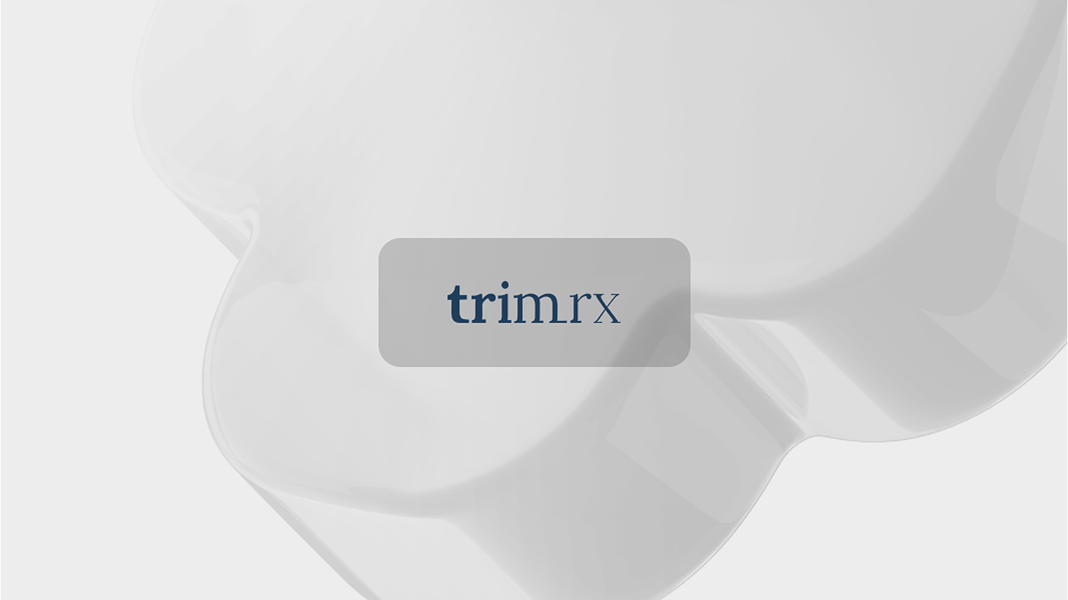Does Running Burn Fat? The Truth Behind the Cardio Craze

When it comes to weight management and fitness, running has long held a steadfast position as one of the most popular forms of exercise. Yet, a common question lingers—does running burn fat? For many, the answer seems straightforward: yes, running helps burn calories, and with a consistent routine, that translates to fat loss. But the reality is more nuanced, and we believe it’s essential to explore the complexities behind running and its effectiveness in fat burning.
In this blog post, we will delve into the science of running as a fat-burning exercise, explore how different types of running can impact fat loss, and discuss how running fits into a broader strategy for achieving weight loss goals. We will also highlight the importance of combining running with a personalized approach to weight loss, which is at the heart of what we do at TrimRx. Our mission is to empower individuals through science-backed, personalized weight loss solutions, merging cutting-edge telehealth innovations with effective strategies to help you embrace a healthier lifestyle.
By the end of this article, you will have a comprehensive understanding of how running affects fat loss, the variables that influence its effectiveness, and how to optimize your running routine to achieve your weight loss goals. Together, let’s explore the fascinating interplay between running and fat burning.
How Running Burns Fat
Running is recognized as one of the most efficient cardiovascular exercises, primarily due to its high calorie-burning potential. But how does this process actually work?
Energy Sources During Running
When we engage in physical activity, our bodies require energy, which is derived from the food we consume. This energy is stored in the form of glycogen in our muscles and liver, as well as fat in our adipose tissues. During the initial stages of running, particularly within the first 30 to 60 minutes, your body predominantly utilizes glycogen for energy. However, as you continue running and glycogen stores become depleted, your body begins to tap into stored fat for energy.
The Role of Duration and Intensity
The duration and intensity of your run significantly influence the type of fuel your body uses. For steady-state runs at a moderate intensity (around 60-70% of your maximum heart rate), your body is more likely to burn fat as a primary source of energy. In contrast, during high-intensity runs (above 80% of your maximum heart rate), your body relies more on glycogen. This is important to understand, as the type of running you incorporate into your fitness routine can impact your overall fat loss.
The Afterburn Effect
One of the remarkable aspects of high-intensity running is the afterburn effect, scientifically known as excess post-exercise oxygen consumption (EPOC). After intense workouts, your body continues to burn calories at an elevated rate as it works to restore itself to pre-exercise levels. This process can last for several hours post-exercise, contributing to additional fat loss.
The Different Types of Running and Their Fat-Burning Effects
Not all running is created equal. Different running styles can produce varying results in terms of fat loss. Let’s explore some common running methods and how they contribute to burning fat.
Steady-State Running
Steady-state running involves maintaining a consistent pace over a longer duration. While this method is excellent for building endurance and cardiovascular fitness, it may not be the most efficient strategy for fat loss. Research indicates that steady-state running can lead to initial weight loss, but over time, your body adapts to the constant pace, resulting in fewer calories burned during the same effort.
High-Intensity Interval Training (HIIT)
HIIT has gained popularity in recent years as a time-efficient way to burn fat. This method combines short, intense bursts of running with rest or low-intensity periods. Studies have shown that HIIT can lead to greater fat loss compared to steady-state running due to the increased EPOC effect and the engagement of multiple muscle groups.
Fartlek Training
Fartlek, which means “speed play” in Swedish, incorporates varying speeds and intensities within a single run. This approach not only keeps the workout interesting but also challenges your body in different ways, which can enhance fat-burning potential by preventing adaptation.
Trail Running
Running on trails offers a unique challenge. The varied terrain requires more effort and engages more muscle groups compared to running on flat surfaces. This additional effort can lead to higher calorie burn and contribute to fat loss.
The Importance of Combining Running with Strength Training
While running is an effective fat-burning exercise, it’s crucial to recognize that integrating strength training into your routine can further enhance your weight loss efforts. Strength training builds lean muscle mass, which in turn boosts your resting metabolic rate—the number of calories your body burns at rest.
The Synergy of Cardio and Strength
Combining running with strength training not only helps improve overall fitness but also enhances fat loss. As you build muscle, your body becomes more efficient at burning calories, even while at rest. This holistic approach aligns with our values at TrimRx, where we emphasize personalized and comprehensive weight loss solutions that consider each individual’s unique journey.
The Role of Diet in Weight Loss
While running and strength training play vital roles in weight loss, it’s essential to remember that diet is a key component. A well-balanced diet that supports your running routine can significantly impact your results.
Creating a Caloric Deficit
To lose weight, you need to create a caloric deficit—burning more calories than you consume. Running can help you achieve this deficit, but it must be balanced with a mindful approach to eating. Consuming nutrient-dense foods while controlling portion sizes will support your weight loss in conjunction with your exercise efforts.
The Importance of Hydration
Hydration is another crucial aspect of your diet that can impact your performance and recovery. Staying well-hydrated allows your body to function optimally during runs and aids in recovery afterward.
Addressing Common Misconceptions About Running and Fat Loss
Despite its many benefits, running is often misunderstood in the context of fat loss. Let’s address some common misconceptions.
Myth 1: Running Alone is Sufficient for Weight Loss
While running can aid in weight loss, relying solely on running without addressing dietary habits or incorporating strength training may lead to suboptimal results. A holistic approach is essential for sustainable weight loss.
Myth 2: More Running Equals More Fat Loss
Intense running can lead to fatigue and burnout. It’s important to find a balance that allows for adequate recovery and minimizes the risk of injury. Incorporating rest days and cross-training can enhance your overall fitness and support long-term weight loss.
Myth 3: Running Causes Muscle Loss
Excessive running without strength training can lead to muscle loss. To counteract this, integrating strength workouts into your routine helps maintain and build muscle, which is crucial for burning fat.
Conclusion
In conclusion, running does indeed burn fat, but its effectiveness is influenced by various factors including intensity, duration, and your overall fitness strategy. By understanding how running works in conjunction with strength training and proper nutrition, you can optimize your approach to achieving your weight loss goals.
At TrimRx, we believe that sustainable weight loss is a journey best navigated with personalized support and a comprehensive strategy. If you’re ready to take the next step in your weight loss journey, we invite you to explore our personalized weight loss programs and take our free assessment quiz to see if you qualify for our prescription weight loss medications. Together, we can empower you to embrace a healthier lifestyle.
FAQs
Does running help with belly fat loss?
Yes, running can help reduce belly fat, especially when combined with high-intensity interval training (HIIT) and a balanced diet.
How often should I run to lose weight?
Aiming for three to four days of moderate-intensity runs of at least 30 minutes each, combined with two days of high-intensity workouts, can be effective for weight loss.
Can I lose weight just by running?
While running can contribute to weight loss, it is most effective when combined with strength training and a healthy diet to create a caloric deficit.
Is it better to run longer or faster for fat loss?
Incorporating a mix of both steady-state running and high-intensity intervals is generally the most effective strategy for fat loss.
Should I focus only on running for weight loss?
No, a balanced approach that includes strength training, cross-training, and proper nutrition is important for sustainable weight loss.
By understanding the multifaceted nature of running and fat loss, we can tailor our strategies to meet our individual needs and overcome challenges on our journey to better health. Let’s embrace this journey together.
Keep reading
Can I Eat Bread for Weight Loss? Debunking the Myths and Exploring the Benefits
Wondering if you can eat bread for weight loss? Discover how to incorporate healthy bread into your diet while achieving your weight loss goals!
Can I Eat Peanut Butter During Weight Loss? Exploring the Benefits and Best Practices
Wondering, ‘can I eat peanut butter during weight loss?’ Discover how to enjoy this creamy treat while reaching your goals. Learn more!
How to Eat Chana for Weight Loss: A Comprehensive Guide
Discover how to eat chana for weight loss with practical tips, delicious recipes, and nutritional insights. Start your journey to better health today!
Can I Eat Idli for Weight Loss?
Wondering if you can eat idli for weight loss? Discover its benefits, nutritional profile, and perfect pairings for a healthy diet!
How Much Dalia to Eat for Weight Loss: A Comprehensive Guide
Discover how much dalia to eat for weight loss and unlock its health benefits. Explore serving sizes and tasty recipes to aid your journey!
Does Walking After Eating Help with Weight Loss?
Discover how walking after eating helps with weight loss! Learn its benefits for digestion and blood sugar control. Start your journey today!
Does Eating Fruit Help with Weight Loss? Exploring the Sweet Science
Discover how eating fruit helps with weight loss. Learn the benefits, top fruits, and tips to boost your health journey today!
Can We Eat Curd During Weight Loss?
Wondering if we can eat curd during weight loss? Discover its benefits, how to incorporate it into your diet, and debunk common myths!
Is Not Eating Breakfast Good for Weight Loss?
Wondering if not eating breakfast is good for weight loss? Discover the latest research and tips for a healthier approach to your diet!





